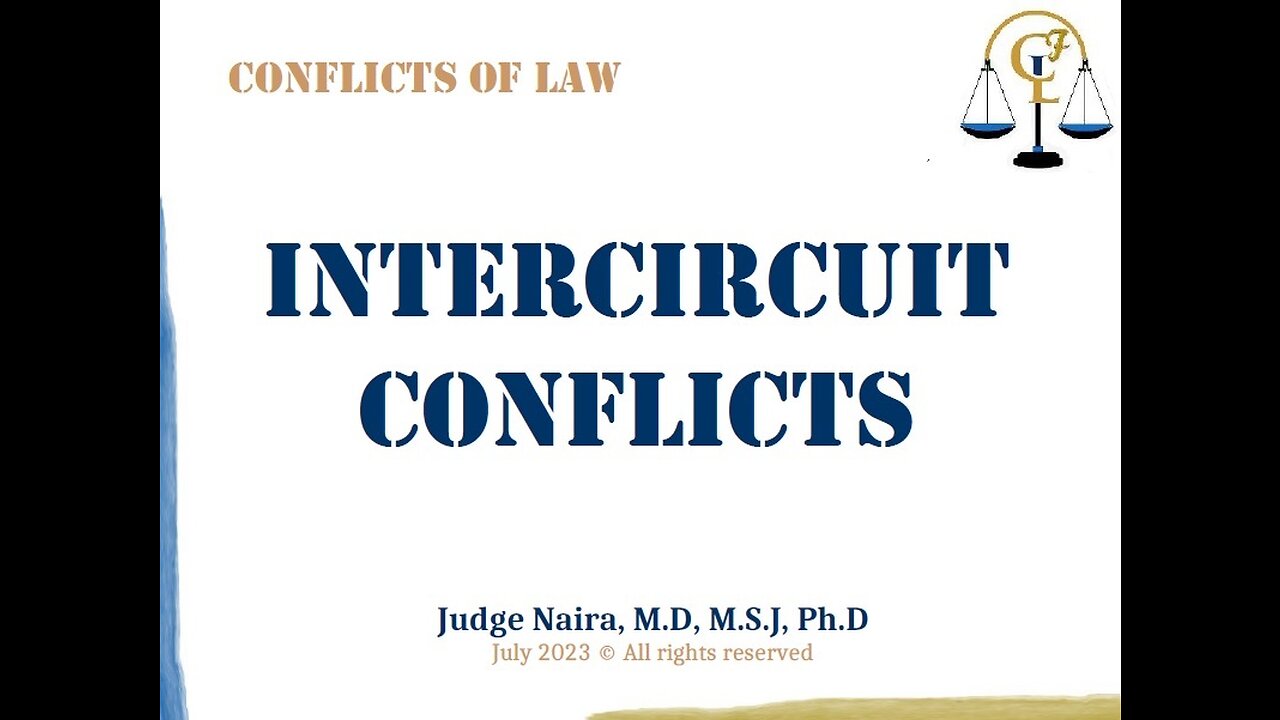INTERCIRCUIT CONFLICTS & TRIBUNAL
The passage of the Judges’ Bill (1925) achieved an absolute arbitrary discretion over the bulk of the U.S. Supreme Court's docket. The creation of 9 original circuits by the Evarts Act (1891) induced the divergence of opinions (i.e. intercircuit conflicts) between those courts (today, 13) and the need to resolve them.
As the Court’s certiorari jurisdiction grows and diverse interpretations of a legal point percolate, we keep looking for consistent criteria (behind Rule 10) based on which the U.S. Supreme Court intervenes to buffer, modify, or eliminate a conflict. At least two reasons are seen behind these criteria:
(1) Where an Appellate Court fails to foresee or see a conflict because the conflict is still unclear, or the point at issue isn't enumerated in the briefs (intentionally, or ineptly);
(2) Where the Supreme Court creates new intercircuit conflicts to escape from solving the pending ones.
This presentation tours you into the supreme judiciary "kitchen," views the intercircuit monitor, the mirroring conflicts, the involvement of judicial curbside (off-the-panel), and discusses some explicit cases: Rosenberg v. Yee Chien Woo (1971), Aldinger v. Howard (1976), McNary v. Haitian Refugee Center (1991), Am. W. Airlines v. Nat'l Mediation Bd. (1992), Catholic Soc. Servs. v. Thornburgh (1992), Casey v. Lewis (1993), Reno v. Catholic Soc. Services (1993), United States v. Shabani (1993), United States v. Gaudin (1994), In re Yochum(1996), United States ex rel. Long v. SCS Business & Technical Institute (1999), etc.
Conventionally, the discussion is followed by a Quiz of multiple-choice questions.
Lastly, the brave ones are welcome to leave comments about the need for a National Intercircuit Trubinual (NIT) to unburden the Supreme Court's load as well as to help the ignored cases find their stand.
-
0/2000
-
Please comment if you are concerned (pro or against) about establishing a National Intercircuit Tribunal (NIT) to unload the U.S. Supreme Court's bulk of cases.
5 likes -
I would comment but I am a citizen of France. But I enjoyed the content.
2 likes
-
 2:08:48
2:08:48
TheSaltyCracker
4 hours agoLefty Grifters Go MAGA ReeEEeE Stream 12-22-24
100K285 -
 1:15:40
1:15:40
Man in America
7 hours agoThe DISTURBING Truth: How Seed Oils, the Vatican, and Procter & Gamble Are Connected w/ Dan Lyons
21.9K16 -
 6:46:07
6:46:07
Rance's Gaming Corner
9 hours agoTime for some RUMBLE FPS!! Get in here.. w/Fragniac
121K1 -
 1:30:48
1:30:48
Josh Pate's College Football Show
9 hours ago $3.88 earnedCFP Reaction Special | Early Quarterfinal Thoughts | Transfer Portal Intel | Fixing The Playoff
25.1K -
 23:55
23:55
CartierFamily
3 days agoElon & Vivek TRIGGER Congress as DOGE SHUTS DOWN Government
84.9K94 -
 5:43:44
5:43:44
Scammer Payback
2 days agoCalling Scammers Live
166K25 -
 18:38
18:38
VSiNLive
2 days agoProfessional Gambler Steve Fezzik LOVES this UNDERVALUED Point Spread!
124K17 -
 LIVE
LIVE
Right Side Broadcasting Network
10 days agoLIVE REPLAY: President Donald J. Trump Keynotes TPUSA’s AmFest 2024 Conference - 12/22/24
4,161 watching -
 4:31
4:31
CoachTY
1 day ago $27.15 earnedCOINBASE AND DESCI !!!!
171K11 -
 10:02
10:02
MichaelBisping
1 day agoBISPING: "Was FURY ROBBED?!" | Oleksandr Usyk vs Tyson Fury 2 INSTANT REACTION
94.7K14


2 Comments